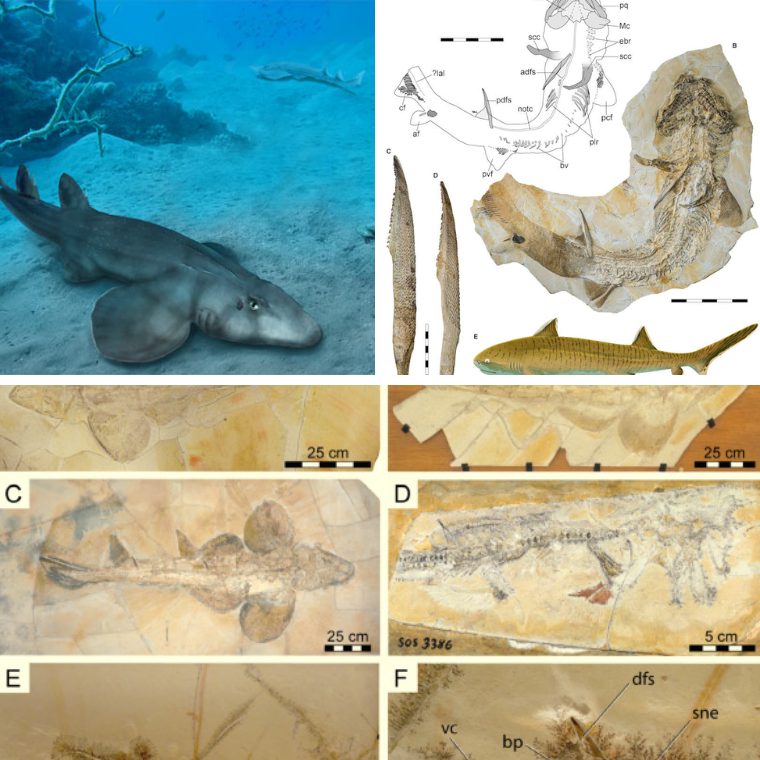The mystery surrounding the remains of two Anglo-Saxons buried 1,400 years ago in south Oxfordshire, identified as a man and a woman, may finally be solved thanks to modern scientific techniques. The pair, who were found at Lowbury Hill, Oxfordshire, in 1913 and 1914, is being studied further by a team from the Universities of Reading, Cranfield, and Oxfordshire Museum Service. The remains of the man are currently on display at the Oxfordshire Museum in Woodstock, but the woman’s bones have been in storage up until now. Previous research indicates that the man was a seventh-century warrior who lived in…
Author: s s
Two-thirds of the world’s albatross species are globally threatened because of human action, with up to 100,000 birds killed annually as bycatch. Fortunately, BirdLife and partners are turning the tide on albatross extinction. Imagine savouring a sumptuous fish dish in a classy restaurant. Mmm! It tastes lip-smackingly good. Suddenly – unexpectedly, traumatically – one bite changes everything. Swallowing the next mouthful lodges a bone in your gullet. You splutter, choke and turn crimson. Fortunately, a quick-thinking companion performs the Heimlich manoeuvre. Ejecting the bone from your throat, she saves you from an untimely demise. Now replay the scene, with one difference.…
Only 30 years ago, Blue-throated Macaw, an endemic to the Beni savannahs of Bolivia, was feared extinct. However, a wide-ranging conservation programme by Asociación Armonía (BirdLife in Bolivia) is beginning to change the fortunes of this enigmatic parrot. A young Blue-throated Macaw peers out of its nest and tilts its head, before taking a leap and spreading its wings for its first flight over Bolivia’s Beni savannah. However, rather than appearing from a natural hole in a tree, this fledgling has emerged from one of the numerous man-made nest boxes that Asociación Armonía has erected as part of a large-scale programme to save…
Genetic Study Examines Europe’s Hunter-Gatherers The Gravettian populations were widespread around Europe about 32,000-24,000 years ago. Although these prehistoric human groups differed in terms of genetics, they did share similar cultural traits. On the left we see a depiction of the west Gravettian population that survived during the Last Glacial Maximum while sadly the eastern and south Gravettian populations disappeared. A previously unknown lineage of Europeans survived the coldest parts of the last ice age, only to vanish when Europe went through a warm spell starting about 15,000 years ago. The discovery comes from the largest study yet to look…
The James Webb Space Telescope (JWST or Webb), 3d illustration, elements of this image are furnished by NASA GETTY Scientists are reporting that damage sustained to the James Webb Space Telescope (JWST) during a micrometeoroid strike in late May 2022 may be worse than first thought. In a new paper published in the wake of Webb’s incredible first images last week a group of scientists outlined the performance of the space telescope during its commissioning phase. They reported problems that “cannot be corrected” as well as a “small effect on the telescope throughput, which is not yet measurable.” Writing about the projected lifetime of the…
NASA scientists spotted a strange polar vortex near the Sun’s northern pole. The vortex appears to be part of a huge filament of solar plasma that the space agency says broke away from the Sun’s surface and is now circling the north pole like a tornado. Unfortunately, scientists have no idea what caused the vortex. Attention was first brought to the Sun’s strange polar vortex when Dr. Tamitha Skov posted on Twitter, sharing images taken by NASA’s Solar Dynamic Observatory. While exciting, the cause of the vortex has left many scratching their heads. Based on all the data that scientists…
The 1,000-year-old Church was found under a cornfield in Germany The foundation walls of the large church of the rediscovered Royal Palace of Helfta in Eisleben in the German state of Saxony-Anhalt have been unearthed by archaeologists. The church was discovered earlier this month, and the foundation walls are now completely exposed. According to the team studying the site, there is evidence of two dwellings at the site by Otto I and his son, Otto II ‘the Red,’ with the former attending the church’s inauguration. Otto I, often known as Otto the Great, was King of Germany from 936 to 973 and…
With the right equipment and techniques, finding these elusive objects is easier than you think. This artist’s illustration shows Dimidium (51 Pegasi b), the first exoplanet discovered that orbited a star similar to the Sun. It was discovered October 6, 1995, orbiting Helvetios (51 Peg), a magnitude 5.5 star slightly more than 50 light-years away in the constellation Pegasus the Winged Horse. For anyone who grew up reading science fiction or watching Star Trek, the existence of planets outside our solar system was a given. We took it for granted that there must be millions of these star systems — but…
For millennia, a hydrogen fog permeated the universe, trapping light. This snapshot from the Illustris cosmological computer simulation shows a massive galaxy cluster at the center, intertwined with threads of dark matter (blue) and gas (orange). The dark ages are when astronomers believe the tiny perturbations visible in the cosmic microwave background transformed into the large-scale structures that we see throughout the universe today. The early universe was a place of extremes. It was inconceivably small and scorching, with all the energy and matter there would ever be crammed into a tiny space a billion times hotter than the center…
Bohemian and Cedar Waxwings look very similar and are more likely to intermingle in the colder months. Here’s how to tell them apart. When you hear a chorus of high-pitched see! notes overhead, expect a good time: A rambunctious flock of waxwings is on its way. Highly social birds that appear to have no sense of personal space, North America’s two waxwing species—Bohemian and Cedar—also look very similar. Telling these elegant birds apart makes for an excellent ID challenge. During the breeding season, location can provide an initial gut check. Cedar Waxwings are predominant throughout the northern continental United States and southern Canada,…
The offspring of a scarlet tanager and rose-breasted grosbeak—distantly related birds whose evolutionary paths diverged 10 million years ago—was recently found in Pennsylvania. A birder named Stephen Gosser recently took a stroll through the woods in Lawrence County, Pennsylvania, when he heard what he thought was a scarlet tanager. These colorful songbirds are famously difficult to spot, so Gosser followed the sound of the bird’s cheerful “chick-burr” call to try to get a good look at it. When the bird finally came into view, Gosser could tell it wasn’t a scarlet tanager. The bird did not have the brilliant red body…
The NASA/ESA/CSA James Webb Space Telescope mission today released its first full-color scientific images and spectroscopic data. Webb, a major space observatory often presented as the successor to the very successful NASA/ESA Hubble Space Telescope, is designed to answer fundamental questions about the Universe. It honors NASA’s second administrator, James E. Webb, who headed the agency during part of the Apollo era, from February 1961 to October 1968. With 100 times more sensitivity than Hubble, the telescope can detect infrared light generated by galaxies as they formed more than 13.5 billion years ago, in the aftermath of the Big Bang. It will…
Using two instruments aboard the NASA/ESA/CSA James Webb Space Telescope, astronomers have produced detailed images of the Cartwheel Galaxy and its two smaller companions. This image of the Cartwheel Galaxy and its companion galaxies is a composite from Webb’s NIRCam and MIRI instrument. Image credit: NASA / ESA / CSA / STScI / Webb ERO Production Team. The Cartwheel Galaxy is a lenticular galaxy located 500 million light-years away in the constellation of Sculptor. Otherwise known as ESO 350-40, IRAS 00352-3359 or LEDA 2248, it has a diameter of 150,000 light-years and a mass of about 3 billion solar masses. Along with the two companion…
Archeologists in Carlisle, England, discovered a treasure trove at the bottom of the drain system of an ancient Roman bathhouse near Hadrian’s Wall. Approximately 30 intricately carved semiprecious stones were discovered. The stones, known as intaglios, had slipped down the drains of the pools and saunas two millennia ago. Around 5,000 years ago, the tradition of carving intaglios began in Mesopotamia. They were frequently used to “sign” documents by pressing them into soft clay. Intaglios spread throughout the ancient world over millennia, eventually becoming fashionable items for the wealthy. According to Cicero, a Roman statesman, and author, some Romans wore portraits of…
New research suggests a tough bacteria called D. radiodurans could long withstand harsh martian radiation in a state of stasis under the surface. If and when humans venture to Mars, they will need to consider how the microbes they bring with them might set up shop on the Red Planet. It’s not the freezing cold or lack of water that fundamentally limits life on Mars; it’s the radiation. While many bacteria have no problem reviving themselves after enduring centuries or even millennia as freeze-dried microbial mummies, radiation damage adds up over time. However, new results published Oct. 31 in the journal Astrobiology show that when freeze-dried…
In the search for life on other Earths, astrobiologists should look for signs of photosynthesis, say scientists. Exoplanet hunting is evolving from a science searching for exotic new worlds into one that is attempting to better understand these planets and to characterize them. Astrobiologists are especially interested in worlds that might support life. One important characteristic is the existence of liquid water, which is essential for life on Earth. So astrobiologists have focused on finding other Earths in the region around stars where liquid water might exist, the so-called habitable zone. And they have found dozens of candidates, with many…
While sorting through some 280,000 artifacts excavated from land reserved for a highway construction project running from Cambridge to the village of Huntingdon in eastern England, archaeologists affiliated with the Museum of London Archaeology (MOLA) discovered a miniature comb that was incredibly ancient and also made from a most unusual material. Now dated to Britain’s Iron Age (750 BC to 43 AD), the two-inch (five-centimeter) comb was carved out of a fragment of a human skull, which may have belonged to a respected elder or perhaps a dead ancestor of the comb’s owner. It looks Like a Comb, but Was it? This unusual and…
We know that the ancient world is now very colorful. But these colors weren’t just limited to robes and other clothing, statues and buildings also offered an astonishing palette. Roman Britain was a place of vibrant color even in the far north. Pliny the Elder mentioned the orange, red, and purple clothes worn by priests and priestesses in addition to the deep red robes of the Roman legions, while popular dyes used in the Roman world included madder, kermes, weld, woad, saffron, and lichen purple. However, these colors were not limited to robes and other clothes; sculptures and buildings also…
Most meteor showers are associated with comets, but asteroid-driven showers might be more common than previously thought. Every day, thousands of small rocks — dust grain- to pebble-sized — cross paths with Earth’s atmosphere and burn up. More organized collisions, known as meteor showers, are visible to us when the planet passes through whole clouds of rocky debris. These fragments were long thought to come strictly from comets whose crusts had been heated by the Sun and cracked open. But early in 2019, NASA’s OSIRIS-Rex spacecraft (short for Origins, Spectral Interpretation, Resource Identification, and Security-Regolith Explorer) captured images from the near-Earth asteroid Bennu that…
A new theory explains the mysterious explosion in Siberia, scientists say, suggesting Earth barely escaped a far greater catastrophe. In the early morning of June 30, 1908, a massive explosion flattened entire forests in a remote region of Eastern Siberia along the Tunguska River. Curiously, the explosion left no crater, creating a mystery that has puzzled scientists ever since — what could have caused such a huge blast without leaving any remnants of itself? Now Daniil Khrennikov at the Siberian Federal University in Russia and colleagues have published a new model of the incident that may finally resolve the mystery.…
The front of one gold earring in the Byzantine style that a metal detectorist found in Germany. A trainee metal detectorist in northern Germany recently hit on something his mentor never expected: an 800-year-old hoard of gold jewelry and silver coins that hints at the area’s trade connections. The large hoard contained a dazzling collection of artifacts. “The hoard consisted of two very high-quality gold earrings set with semi-precious stones, a gilded pseudo-coin brooch, two gilded stone-studded finger rings, a ring fragment, a small formerly gilded perforated disc, a ring brooch, and about 30 silver coins, some of them heavily…
Nitrous oxide (also known as laughing gas) — a product of microbial nitrogen metabolism — is a compelling exoplanet biosignature gas with distinctive spectral features in the near- and mid-infrared regions of the electromagnetic spectrum. Schwieterman et al. conducted a systematic photochemical and spectral investigation of nitrous oxide as an exoplanet biosignature and place upper limits on the nitrous oxide abundances and detectability from a productive biosphere. Image credit: Sci.News. One of the most compelling drivers of exoplanet science is the search for inhabited planets like Earth, which may be identified through remote biosignatures — chemical compounds in a planet’s…
Inside all huge galaxies lies a supermassive black hole. Some are shining brightly, while others are barely visible — but all of them can teach us something about how galaxies evolve. Centaurus A is a nearby active galaxy. It is a Seyfert galaxy: Its center hosts an actively feeding supermassive black hole, but that region’s light is not bright enough to drown out the galaxy around it. In a galaxy like the Milky Way, light comes entirely from a combination of shining stars and glowing gas. However, in an active galaxy, the energy output is too high to attribute to…
Paleontologists from the University of Vienna and elsewhere have revised a controversial species of the elasmobranch Protospinax annectans based on new specimens from the Late Jurassic Konservat-Lagerstätte of the Solnhofen Archipelago in Bavaria, Germany. Environmental reconstruction of the Solnhofen Archipelago, showing Protospinax annectans in association with the Late Jurassic ray Asterodermus platypterus. Image credit: Jambura et al., doi: 10.3390/d15030311. “The fossil record of sharks and rays (Elasmobranchii) mainly consists of isolated teeth, which are rapidly grown and continuously replaced,” said Dr. Patrick Jambura, a researcher in the Department of Palaeontology at the University of Vienna, and colleagues. “By contrast, skeletal remains are rare due to the…


























